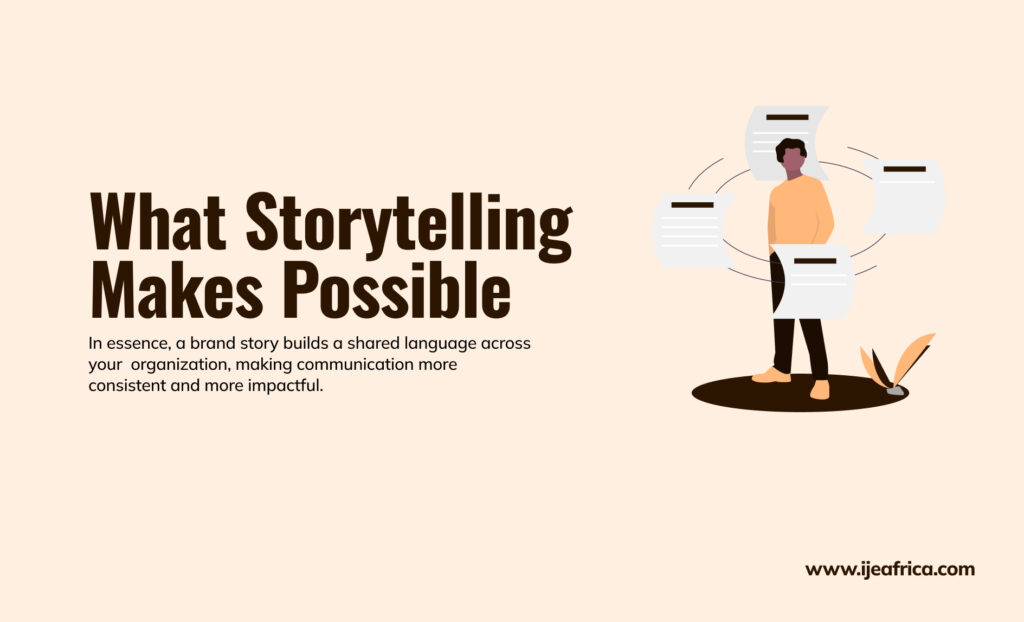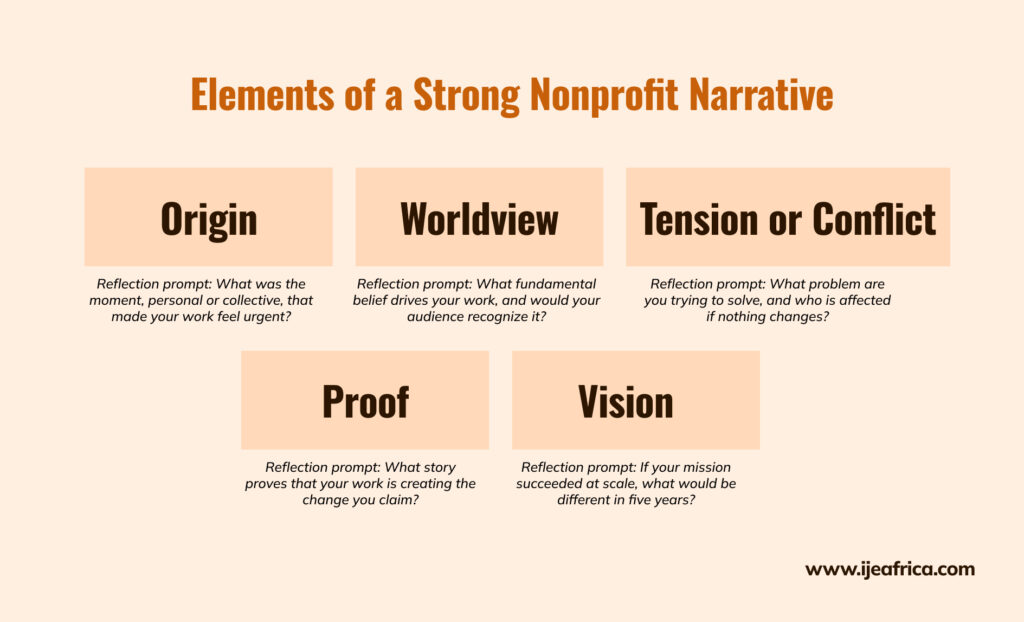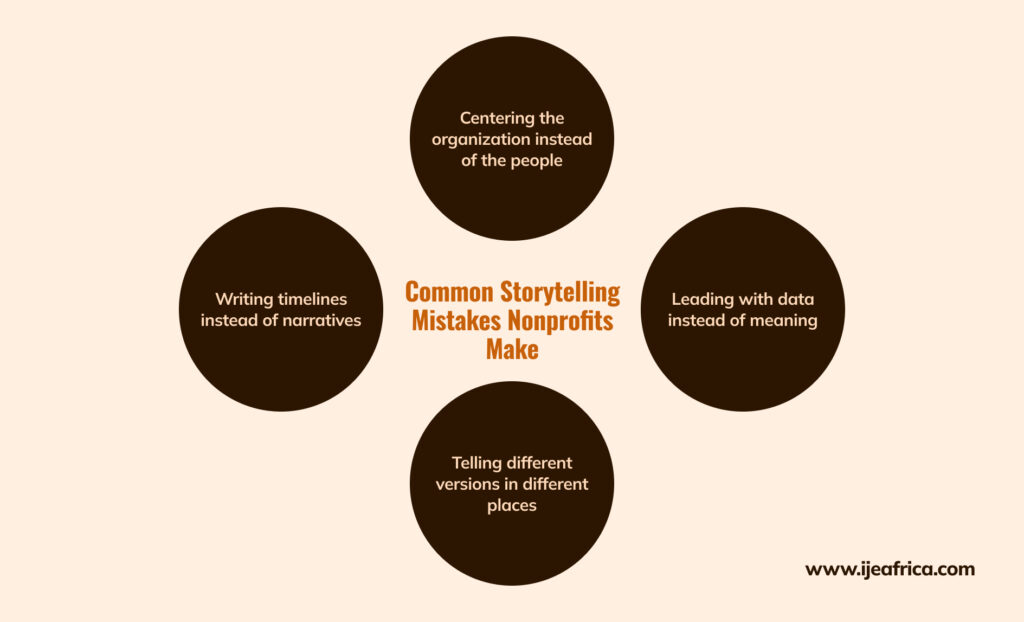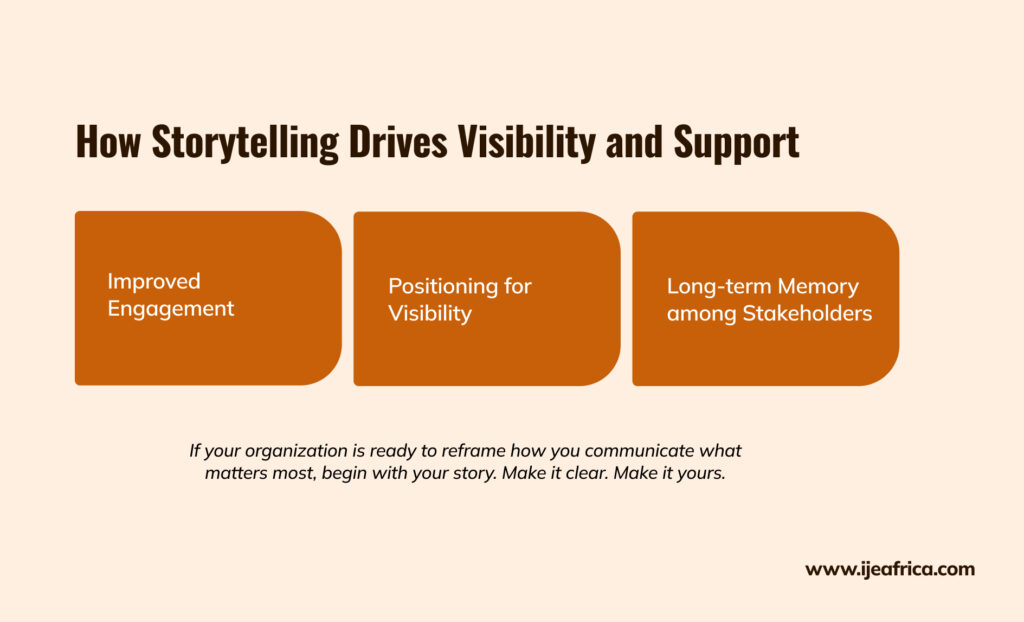At a community event, someone turns to a nonprofit founder and asks, “So what exactly does your organization do?” The founder smiles, hesitates, and begins to explain. They mention the programs, the impact, and the communities served. But midway through, they can feel it; the story isn’t landing. The listener nods politely, offers a kind word, and drifts away.
This is more common than most nonprofits admit. Many organizations do the heavy lifting and truly make impact, but struggle to translate their work and mission into a story others can feel, remember, and repeat.
Your nonprofit’s story goes beyond your organization’s history; it’s supposed to be how you make people care, how you help them see what you see. If your organization has not reached that level yet, this is for you.
This guide will walk you through how to shape a narrative that resonates with the right people who’ll support, amplify, and stand with your mission.
What It Actually Means to Tell Your Nonprofit’s Story
When nonprofit teams talk about storytelling, they often think about the organization’s history — when it was founded, what inspired the founders, and the programs it launched. While that’s part of the narrative, it’s not the full picture.
Telling your nonprofit’s story means crafting a cohesive narrative that explains what you do, why you do it, who benefits, and what future you’re working toward. It means turning internal knowledge, such as your values, beliefs, results, and community connections, into a public-facing message that lands with clarity.
What Storytelling Makes Possible

A clear story changes how people engage with your organization, gives meaning to your work, and makes your mission legible to those outside your team. Before being brand advocates and committed supporters, people want to understand what you do, what it means, why it matters, and how they fit into your mission.
In essence, a brand story builds a shared language across your organization, making communication more consistent and more impactful.
For nonprofits, storytelling creates traction. A well-told story will ultimately influence your brand visibility efforts. by helping supporters repeat your message in their own words, which extends your reach more effectively than any one campaign ever could. Donors remember the story you tell, not the services you list. Partners decide to collaborate because your vision comes through clearly.
Internally, storytelling brings coherence. It aligns communications, programs, and leadership around a shared narrative. This kind of clarity helps avoid mixed messages, scattered branding, and confusion about priorities. When everyone in your organization speaks from the same story, your brand becomes more than visual, it becomes memorable.
Elements of a Strong Nonprofit Narrative

Every strong nonprofit story is built from a set of foundational elements. These are anchors that give your message shape, clarity, and emotional weight.
1. Origin
This is the moment you realized something had to change. What gap did you see? What need pushed you to act? Your origin is where your audience first meets your motivation.
- Reflection prompt: What was the moment, personal or collective, that made your work feel urgent?
2. Worldview
Every nonprofit operates from a belief, which shapes how you view the problem and what kind of change you pursue. Your worldview gives your story depth; it shows people what you believe should be true about the world.
- Reflection prompt: What fundamental belief drives your work, and would your audience recognize it?
3. Tension or Conflict
This is what you’re up against. What are the statistics? What’s the human consequence of inaction? Make it specific. The clearer the problem, the more people can understand the stakes.
- Reflection prompt: What problem are you trying to solve, and who is affected if nothing changes?
4. Proof
This is the part where you show your work. Tell one short, memorable story — a person, place, or outcome that shows what change looks like. Don’t overwhelm with metrics. Start with something someone could feel.
- Reflection prompt: What story proves that your work is creating the change you claim?
5. Vision
This is the future you’re working toward. Be vivid. Don’t say “we envision a better world.” Say what changes, and for whom. Give your audience a reason to believe that the future you see is worth building.
- Reflection prompt: If your mission succeeded at scale, what would be different in five years?
Used together, these elements form a narrative structure that not only informs but invites. It helps supporters understand where your organization stands, and how they can stand with you.
Common Storytelling Mistakes Nonprofits Make

Nonprofit storytelling can fall apart if the structure and focus aren’t clear. Below are common ways well-meaning organizations unintentionally weaken their narrative:
1. Centering the organization instead of the people
Stories that focus too much on the organization often miss the emotional core. Audiences connect with people and the transformation they experience, not with abstract structures.
2. Writing timelines instead of narratives
An annual report is not a story. A true story moves through conflict, resolution, and meaning. Rather than listing achievements in chronological order, highlight defining moments that reveal growth or clarity of mission.
3. Leading with data instead of meaning
Data matters, but it doesn’t come first. A number without a name is easy to forget. One vivid example backed by evidence has far more impact than raw statistics. Begin with the story, then reinforce it with numbers.
4. Telling different versions in different places
When your website says one thing, your proposal another, and your elevator pitch a third, it signals confusion. While your story should adapt to the platform, the core message should remain consistent — same belief, same outcome, same direction.
Avoiding these mistakes helps you keep a consistent, cohesive, and coherent narrative, and these elements are needed if you want to build a brand that stays resonant and top of mind.
How Storytelling Drives Visibility and Support

When a nonprofit story is clear, everything else becomes easier. The people who need to hear about your work begin to recognize your message, repeat it to others, and remember what your organization stands for. Storytelling creates the conditions for visibility by making your work easy to understand and share.
1. Improved Engagement
Stories improve engagement because they invite people into a journey. A well-framed narrative gives your audience something to feel, and something to follow. It shows them where your work begins, what it challenges, and where it’s headed. That clarity builds trust and invites action.
2. Positioning for Visibility
From a visibility standpoint, storytelling does the work of positioning. It signals who you are, what values you uphold, and what kind of change you’re building. It helps your audience place you in the broader landscape of social change, not just as another organization doing good work, but as one with a distinct vision and voice.
3. Long-term Memory among Stakeholders
Donors and partners will also remember stories better. When your narrative resonates, it supports funding, collaboration, and long-term connection. Most importantly, it ensures that your message doesn’t just get heard, but that it is remembered by people who matter.
Your story shapes how people see your work. If you’re not intentional about it, others will fill in the gaps, or overlook it entirely.
However, telling your story well doesn’t have to result in an oversimplification of your mission. You can stay true to your brand archetypes, yet present your story in a way that others can feel, remember, and pass on. That’s what turns understanding into support.
If your organization is ready to reframe how you communicate what matters most, begin with your story. Make it clear. Make it yours.
